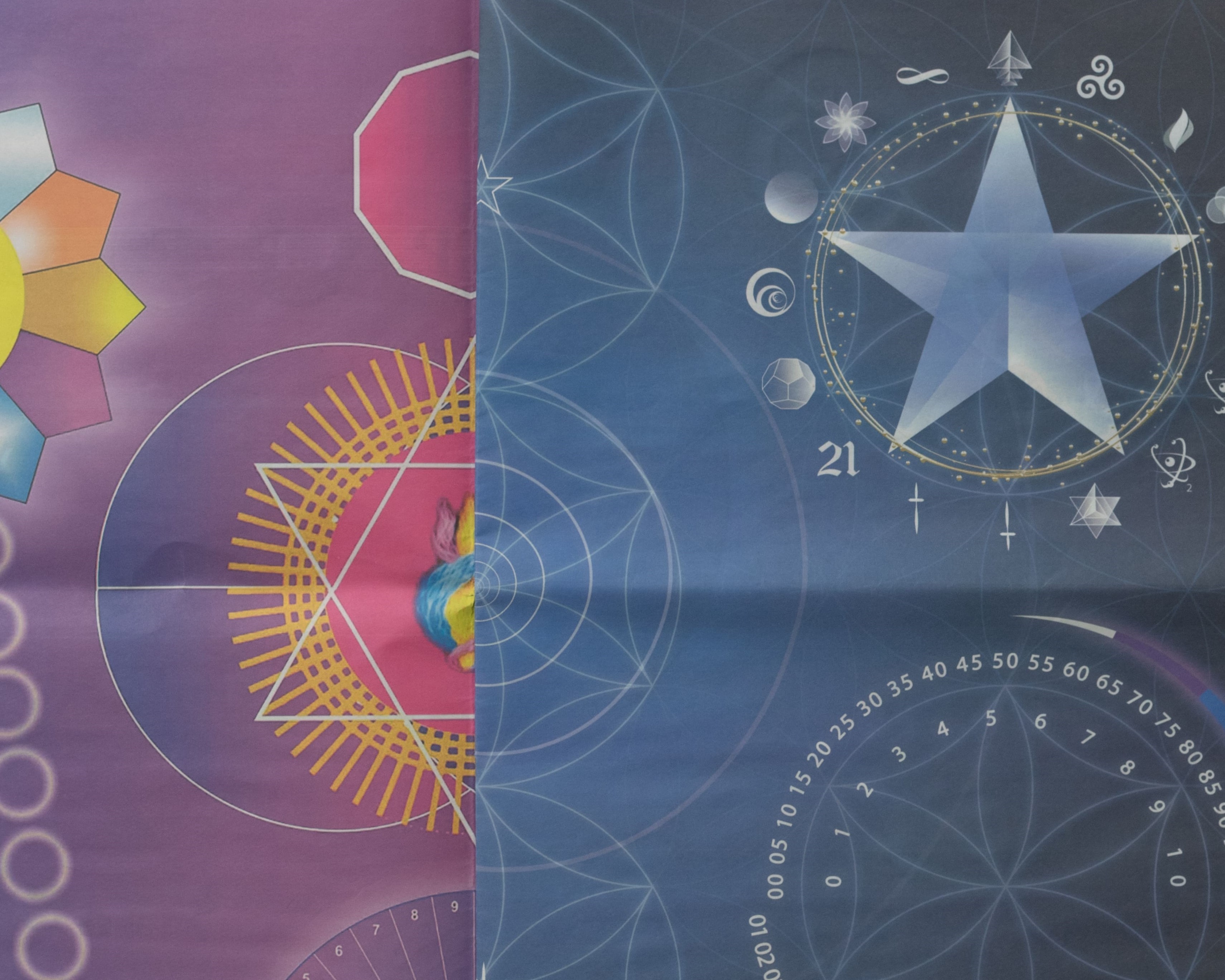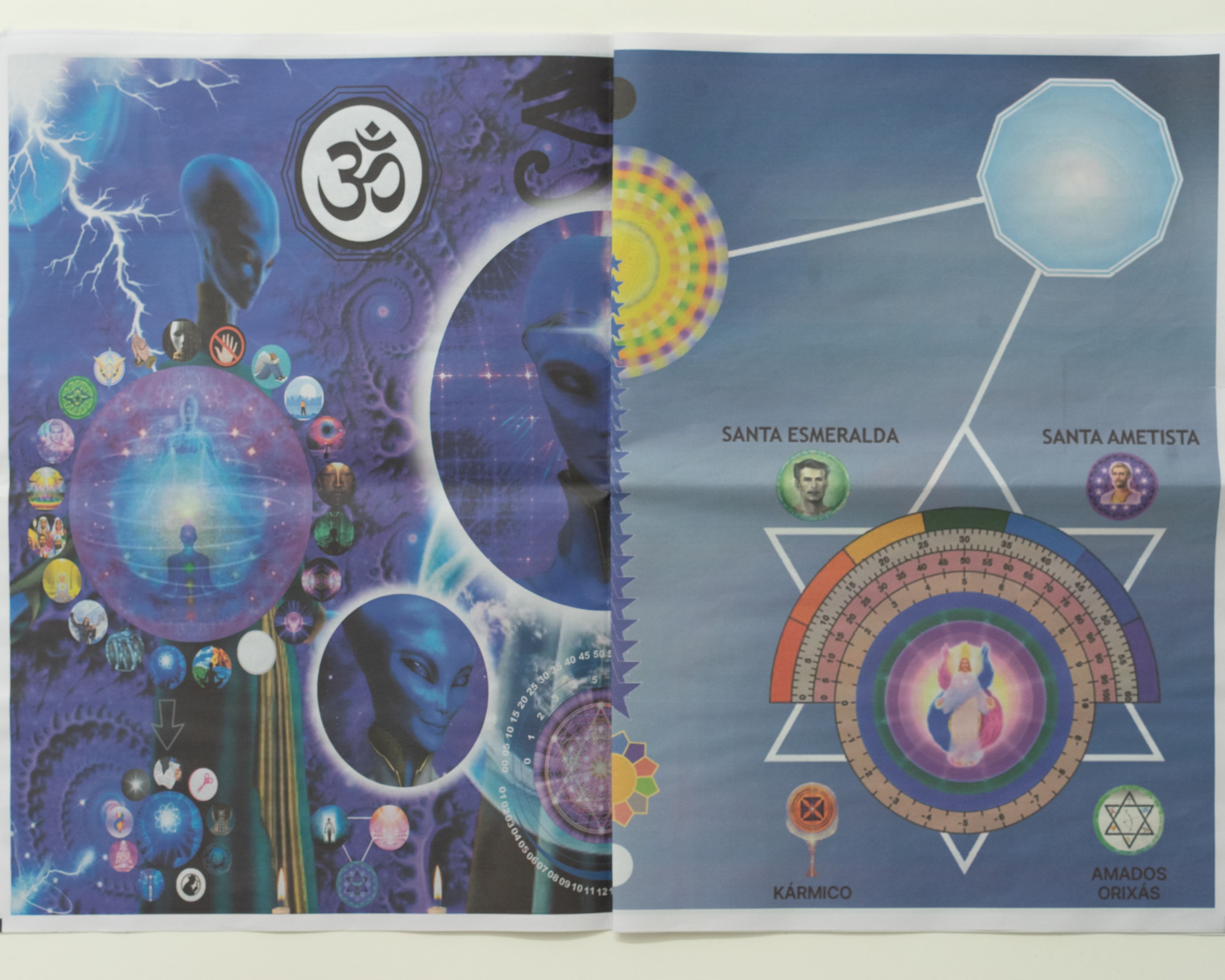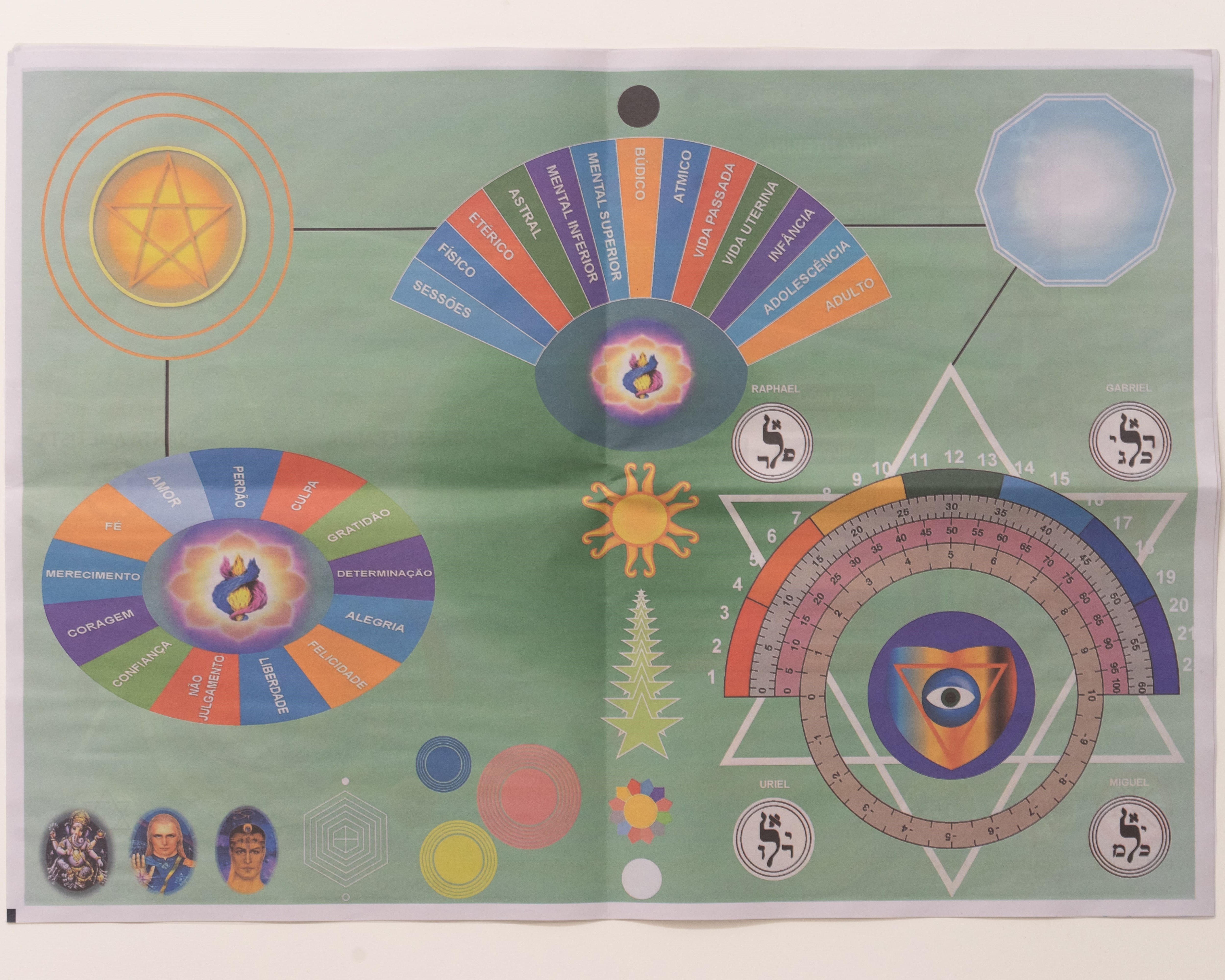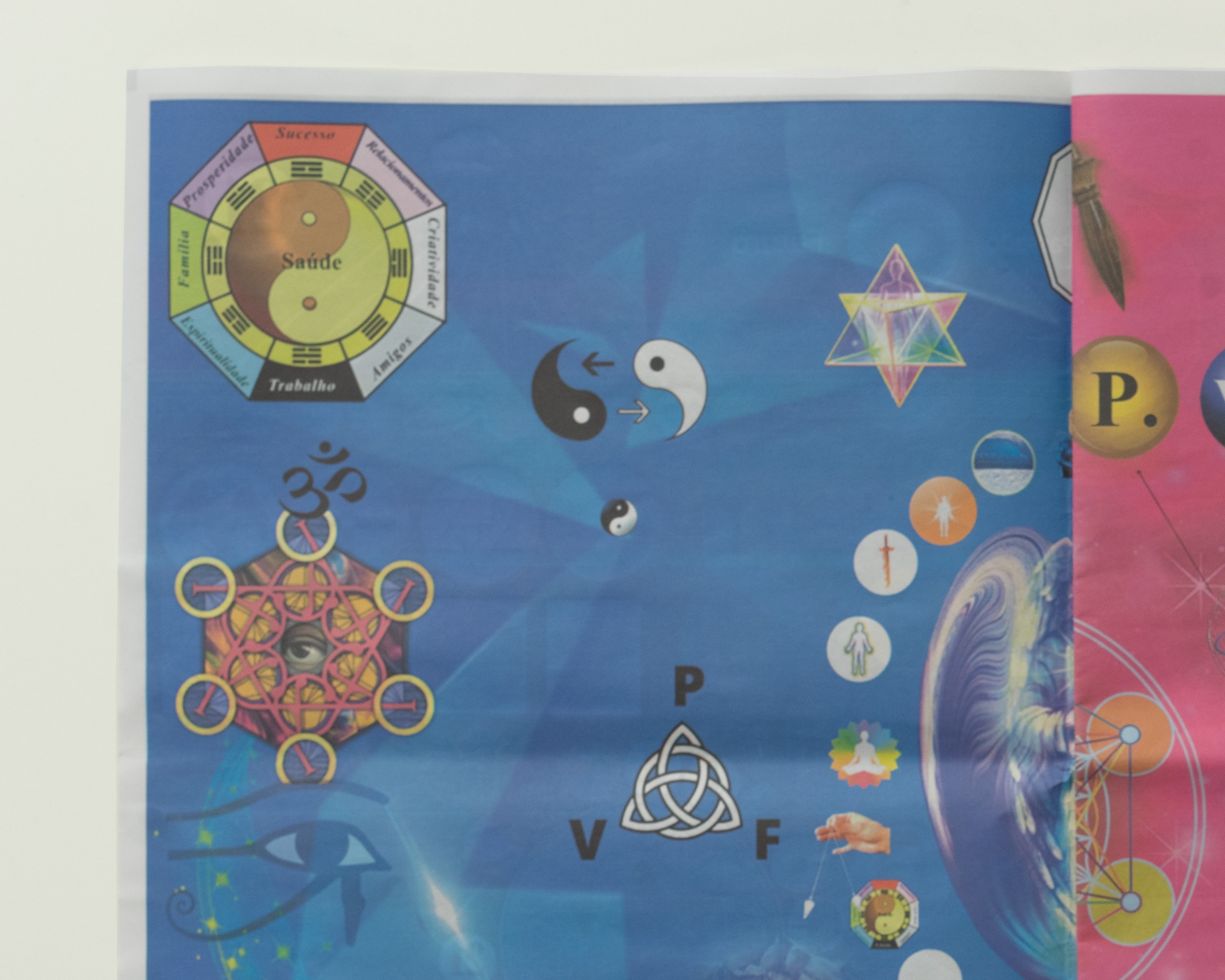



CONDYLURA10
w/MATTIA PAJÈ
2025
Edition of 100
20 pages
Broadsheet
10 € BUY
Condylura publishes a free digital copy at sold-out
The condylura becomes an instrument for radionic diagnostics: ten plates, printed full-page and individually detachable, so that they can be consulted. In Mattia Pajè’s work, pseudo-sciences, spiritualism, and post-truth permeate the relational and affective worlds, shaping a personal speculative cosmology in which the artwork itself becomes a magical object—to open an alternative reality.
TEXT
Ten original radionic plates, printed full-page and individually detachable, to be consulted. Interlocked with one another, they generate further associations between the iconographic worlds of unofficial theories and pseudoscientific doctrines that draw from religious syncretism, astrology, esotericism, Kabbalah, New Age revival, pop and internet cultures. These are pages saturated with colors, sci-fi backgrounds, and copy-paste compositions, where the Caduceus, the Triune, and the Labyrinth of Chartres stand alongside the Ohm symbol, six-pointed stars, and the Taijitu, further connecting with angelic hierarchies, Grey aliens, Buddha, and Ganesh. This selection of South American plates—where radionics displays a more vibrant visual language than its European counterparts—comes from the vast research archive of Mattia Pajè, a visual artist whose work blends pseudo-sciences, spiritualism, post-truth, media, and magic into the relational sphere—everyday, biographical, and affective elements—shaping a personal speculative cosmology.
Radionics, an alternative therapeutic practice born in the early twentieth century, is based on the idea that forms, symbols, circuits, and devices can channel, modulate, or amplify subtle energies and intentions, acting on the physiological, psychological, and spiritual planes. Information and vibration are considered interchangeable elements that can be transmitted and manipulated through diagrams or instruments: the radionic operator contacts the patient remotely, rewriting and informing the frequencies of their vital field to resolve imbalances. A form of tele-therapy that connects to magic and the sacred through its use of word, number, and drawing—where images take on a mediating and transformative function. Yet is also deeply tied to the information age and emblematic of the relationship between neo-esotericism and technology—particularly in reference to Erik Davis’s studies, fromTechgnosis (1998) to High Weirdness(2019)—not only because its practice openly uses communication media, but because it reinterprets their operation: a worldview as a network of energies that coincides with the digital network; a use of the sign as an instrument capable of rewriting vital codes, like an interface. Radionics appears, in the electronic age, as the equivalent of what Mesmerism represented in the electric one: incongruous and spectacular explorations that, however, reveal—borrowing from Tristan Garcia’s analysis in Intense Life (2016)—an idea of modernity as a magical promise made by reason.
The scientific unfoundedness of radionics takes on an autopoietic value within the artist’s practice: it serves to construct a visual-ritual device that triggers imaginative transformations, self-defined and self-sustaining—a pendulum oscillating between the necessity of ritual and the play of imagination. These are not mere images, but aesthetic devices, instruments removed from their original context to be reactivated within the field of the image’s performativity, and situated within the artist’s broader body of installations and image-based works, where individual objects or subjects function as elements of an imaginative and paraspeculative lexicon. They perform transformations and orient perceptions, merging magnetism and symbolic potency through a language that is not specifically narrative but diagrammatic, closer to the logic of symbols, where function prevails over contextual storytelling.
Pajè acts as a kind of bricoleur, capable of composing or selecting visual amulets and relational, environmental, and behavioral devices. This same principle animates projects such as the exhibition Fuori Terra and the parallel publication of the artist manual 1 (2022): forests of unguided images, constellations of possible connections and sudden apparitions. Or works such as Pila Thinkerwiller and Like atoms, I am different if I look at myself, where engraved metal plates accumulate and catalyze symbols and numbers that function as condensers of intention, opening up countless possibilities or impulses inscribed in the illustration of relational—both social and personal—dynamics.
Following Georges Didi-Huberman reasoning inThe Open Image, this selection can be approached as a collection of operative images, which not only represent but act—images that overflow their appearance and produce effects. Interfaces, spiritual machines that, to return to Erik Davis, operate as technologies of the invisible—able to channel forces and give form to what escapes linear logic, in a kind of esoteric practice imbued with magical power and symbolic charge.
In line with the artist’s attention to social and digital dynamics that give rise to phenomena of counterculture and post-truth, pseudo-science and pseudo-history, conspiracy theories and alternative medicine doctrines, the role that radionics assumes in Pajè’s work is not that of an occult technique, but of a technology of imagination: a structure that preserves its formal magnetism and its promise of efficacy, transforming into an artistic promise capable of generating new ritualities. The truth of the practice matters less than its capacity to produce a space of possibility—suspended, unfinished. Its fruition occurs through passage and contact, in a space where the page itself becomes a ritual element. Thus, the publication does not merely contain images: it is an amulet, an esoteric device, an active archive, an open image ready to perform anew each time, assuming new authenticities as identified by whoever manipulates it.
